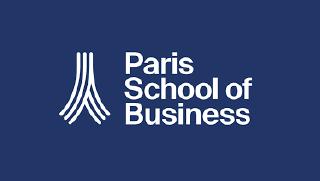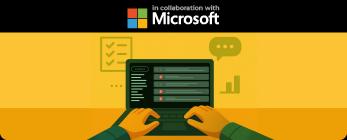Working professionals
Domains
Doctorate
Artificial Intelligence
Data Science
Gen AI & Agentic AI
MBA
Marketing
Management
Education
Project Management
Machine Learning
Doctorate
For All Domains
IIITB & IIM, Udaipur
Chief Technology Officer & AI Leadership ProgrammeSwiss School of Business and Management
Global Doctor of Business Administration from SSBMEdgewood University
Doctorate in Business Administration by Edgewood UniversityGolden Gate University
Doctor of Business Administration From Golden Gate UniversityRushford Business School
Doctor of Business Administration from Rushford Business School, SwitzerlandGolden Gate University
Master + Doctor of Business Administration (MBA+DBA)Leadership / AI
Golden Gate University
DBA in Emerging Technologies with Concentration in Generative AIGolden Gate University
DBA in Digital Leadership from Golden Gate University, San FranciscoArtificial Intelligence
Degree / Exec. PG
IIIT Bangalore
Executive Diploma in Machine Learning and AIOPJ Global University
Master’s Degree in Artificial Intelligence and Data ScienceLiverpool John Moores University
Master of Science in Machine Learning & AIGolden Gate University
DBA in Emerging Technologies with Concentration in Generative AIExecutive Certificate
IIITB & IIM, Udaipur
Chief Technology Officer & AI Leadership ProgrammeIIIT Bangalore
Executive Programme in Generative AI for LeadersupGrad | Microsoft
Gen AI Foundations Certificate Program from MicrosoftupGrad | Microsoft
Gen AI Mastery Certificate for Data AnalysisupGrad | Microsoft
Gen AI Mastery Certificate for Software DevelopmentupGrad | Microsoft
Gen AI Mastery Certificate for Managerial ExcellenceOffline Bootcamps
upGrad
Data Science and AI-MLData Science
Degree / Exec. PG
O.P Jindal Global University
Master’s Degree in Artificial Intelligence and Data ScienceIIIT Bangalore
Executive Diploma in Data Science & AILiverpool John Moores University
Master of Science in Data ScienceExecutive Certificate
upGrad | Microsoft
Gen AI Foundations Certificate Program from MicrosoftupGrad | Microsoft
Gen AI Mastery Certificate for Data AnalysisupGrad | Microsoft
Gen AI Mastery Certificate for Software DevelopmentupGrad | Microsoft
Gen AI Mastery Certificate for Managerial ExcellenceupGrad | Microsoft
Gen AI Mastery Certificate for Content CreationOffline Bootcamps
upGrad
Data Science and AI-MLupGrad
Data AnalyticsGen AI & Agentic AI
Gen AI & Agentic AI
Masters

Paris School of Business
Master of Science in Business Management and TechnologyO.P.Jindal Global University
MBA (with Career Acceleration Program by upGrad)Edgewood University
MBA from Edgewood UniversityO.P.Jindal Global University
MBA from O.P.Jindal Global UniversityGolden Gate University
Master + Doctor of Business Administration (MBA+DBA)Executive Certificate
IMT, Ghaziabad
Advanced General Management ProgramMarketing
Executive Certificate
upGrad | Microsoft
Gen AI Foundations Certificate Program from MicrosoftupGrad | Microsoft
Gen AI Mastery Certificate for Content CreationOffline Bootcamps
upGrad
Digital MarketingManagement
Degree
O.P Jindal Global University
MSc in International Accounting & Finance (ACCA integrated)
Paris School of Business
Master of Science in Business Management and TechnologyGolden Gate University
Master of Arts in Industrial-Organizational PsychologyExecutive Certificate
Education
Education
Northeastern University
Master of Education (M.Ed.) from Northeastern UniversityEdgewood University
Doctor of Education (Ed.D.)Edgewood University
Master of Education (M.Ed.) from Edgewood UniversityProject Management
Certification
Knowledgehut
Leadership And Communications In ProjectsKnowledgehut
Microsoft Project 2007/2010Knowledgehut
Financial Management For Project ManagersKnowledgehut
Fundamentals of Earned Value Management (EVM)Knowledgehut
Fundamentals of Portfolio ManagementKnowledgehut
Fundamentals of Program Management-35c169da468a4cc481c6a8505a74826d.webp&w=128&q=75)
Knowledgehut
CAPM® CertificationsKnowledgehut
Microsoft® Project 2016Certifications & Trainings
-7f4b4f34e09d42bfa73b58f4a230cffa.webp&w=128&q=75)
Knowledgehut
PMP® Certification-7f4b4f34e09d42bfa73b58f4a230cffa.webp&w=128&q=75)
Knowledgehut
PMI-RMP® Certification-7f4b4f34e09d42bfa73b58f4a230cffa.webp&w=128&q=75)
Knowledgehut
PMP Renewal Learning PathKnowledgehut
Oracle Primavera P6 V18.8Knowledgehut
Microsoft® Project 2013-7f4b4f34e09d42bfa73b58f4a230cffa.webp&w=128&q=75)
Knowledgehut
PfMP® Certification CourseKnowledgehut
Project Planning and MonitoringPrince2 Certifications
Knowledgehut
PRINCE2® FoundationKnowledgehut
PRINCE2® PractitionerKnowledgehut
PRINCE2 Agile Foundation and PractitionerKnowledgehut
PRINCE2 Agile® Foundation CertificationKnowledgehut
PRINCE2 Agile® Practitioner CertificationManagement Certifications
-7f4b4f34e09d42bfa73b58f4a230cffa.webp&w=128&q=75)
Knowledgehut
Project Management Masters Certification ProgramKnowledgehut
Change ManagementKnowledgehut
Project Management TechniquesKnowledgehut
Product Management Certification ProgramKnowledgehut
Project Risk ManagementMachine Learning
Machine Learning
Fresh graduates
Domains
Data Science
Management
Marketing
Data Science
Bootcamp
Offline Bootcamps
upGrad
Data Science and AI-MLupGrad
Data AnalyticsManagement
Marketing
Bootcamp
upGrad Campus
Advanced Certificate in Performance MarketingOffline Bootcamps
upGrad
Digital Marketing- Study abroad
- Offline centres
More
RESOURCES
BlogsCutting-edge insights on education
WebinarsLive sessions with industry experts
TutorialsMaster skills with expert guidance
Learning GuideResources for learning and growth
COMPANY
Careers at upGradYour path to educational impact
Hire from upGradTop talent, ready to excel
upGrad for BusinessSkill. Shape. Scale.
Experience centerImmersive learning hubs
About usOur vision for education
OTHERS
Refer and earnShare knowledge, get rewarded
Microeconomics Courses Online
The study of microeconomics is basically an analysis of the tendencies that are supposed to originate when these individual actors make a decision. Read more below
20(1)-70997669bd1a4ba2b565901e0eae2fa5%20(1)-de9c82be352d44bcb6a48fecf60b4465.jpeg&w=3840&q=75)
Microeconomics Course Overview
Microeconomics and Macroeconomics constitute the two nodal branches of economics. In Microeconomics, individuals are often categorised as belonging to microeconomic subgroups such as business owners, buyers and sellers. The study of microeconomics is basically an analysis of the tendencies that are supposed to originate when these individual actors make a decision. Changes with reference to incentives, resources and prices of production coupled with production methods are recorded.
Positive microeconomics discusses economic behaviour and what to expect when particular variables change. Positive microeconomics tends to provide insight into a company's sales, productivity and profit based on any recent changes in their manufacturing or marketing strategy.
These insights are then used to prescribe the course of action for these companies or governments to work effectively and undertake measures such that their profits remain intact and the demand chain is sated.
Microeconomics is a branch of social science that looks at how decisions and incentives affect how resources are allocated and used. Microeconomics explains how and why different things have varying values, how people behave and profit from efficient production and trading, and how people may work together and coordinate best.
In general, microeconomics focuses on the issues that affects individual, groups, or organisations as compared to the macroeconomics which focuses on issues affecting the national and global economy.
According to the official definition, microeconomics is the area of economics that examines how people and businesses behave and how decisions are made in light of scarce resources. Microeconomics research demonstrates how households and businesses interact or work together. This contact develops a market for products and services, which significantly impacts product pricing.
A key idea in modern microeconomics is the circular flow of economic activity, which demonstrates how families and businesses interact. The components of the economic activity flow are:
![]()
Money flowing to and from homes and businesses as revenue
1. Receiving of goods and services by households
2. Sale of resources under private ownership to companies so they can make products
3. The relationship between business and household spending
4. Microeconomics pays special attention to this relationship and economic activity to monitor total firm output, household income, and total spending
The following examples and circumstances illustrate how to apply the definition of microeconomics:
1. Searching for the best loan interest rates as first-time homebuyers.
2. Customers favour one product over another when making a purchase.
3. Company acquiring capital assets to grow.
4. Two companies are vying for the same market.
5. Customers' demand is declining as a result of rising service costs.
6. Businesses reducing product supply as a result of price hikes.
A subfield of social science known as microeconomics theory focuses on analysing separate, individual economic entities that collectively make up the whole economy. Each individual, family, business, or industry is a separate economic unit. It is the area of economics where the consequences of specific elements and individual decisions are discussed.
The primary focus of microeconomics is on the variables that affect individual economic decisions, the impact of changes in these variables on each decision-maker, and how demand and prices are established in specific markets.
The study of phenomena that affect the entire economy, such as unemployment, GDP (gross domestic product) growth or decline, and inflation, is called macroeconomics, in contrast to microeconomics.
Analysing market processes that set relative prices for goods and services and dividing scarce resources among several possible uses are some of the objectives of microeconomics. It demonstrates the circumstances under which open markets finally result in favourable distributions.
Simply put, it is the study of how people make decisions in light of the fact that they have a certain amount of time and money to spend on things.
Microeconomics also examines market failure, or when markets fail to deliver useful and efficient outcomes.
Microeconomics is defined as follows in the Financial Times' glossary of business terms:
“The study of trends that pertain to the different elements (companies, industries, consumers, etc.) that make up the economy.”
Supply And Demand:
Over time, when demand outpaces supply, suppliers either increase their supply or raise their pricing. In an ideal world, demand would decline as prices rose since fewer people could afford it. By doing this, providers buy themselves some time to resume meeting demand. In contrast, suppliers would have to reduce their supply or lower the pricing of the goods offered if supply rose faster than demand. Keep in mind that manufacturers currently have an excess of stock. So as prices decline, demand would increase, and the supply would balance out. Finally, equilibrium is reached when supply and demand are at their best. The relationship between supply and demand and the equilibrium condition presupposes that all other variables, outside price and demand, remain constant.
![]()
Opportunity Cost:
A consumer who also makes decisions has a finite amount of money and an infinite number of ways to spend that money. The opportunity cost is the price a buyer pays for not selecting the optimal option. This presumes that the options are exclusive of one another.
It's a chance that a decision-maker passes up. If a commuter takes train to work instead of driving. The train takes 70 minutes and the driving takes 40 minutes. The opportunity cost would be the hour that will be spent elsewhere each day.
Law of Decreasing Marginal Utility
The utility of consumers is maximised by using this microeconomics approach. Diminishing marginal utility is very important in determining what people will buy. This law emphasizes how the demand for specific goods declines when a customer consumes more units in a row. For instance, a person might purchase some ice cream, eat it, and then purchase more. Finally, after consuming three ice creams, he decides he no longer wants them and quits buying them.
Giffen Goods:
Giffen products are essentials whose price increases have no impact on sales; this is a part of advanced microeconomics. Giffen products are distinctive due to the price and demand relationship. These are likely logical choices where the purchasers are prepared to spend more despite price hype. These extraordinary items are called "Giffen goods," with a positively sloping demand curve. For instance, a rise in gasoline prices does not result in a decrease in demand. Products that want to be categorised as Giffen Goods need to meet some of the requirements listed below:
- A lack of available alternatives.
- The replacement should be subpar.
A significant amount of the customer's budget should go toward purchasing the goods.
Veblen Goods:
Giffen goods are comparable to Veblen goods. These items are regarded as a sign of status, esteem, or luxury. Consumers don't mind shelling out more money for these products. Typical examples are jewellery, jewels, and Rolls Royce vehicles are the greater costs. The more expensive something is, the more eagerly people will buy it.
Elasticity And Income:
The demand for more expensive things rises along with income. Additionally, as income declines, so does demand. Alternatively, as the cost decreases, customers can purchase more products. The customer's purchasing power increases in both scenarios. On the other hand, the products of Giffen and Veblen are illustrations of inelastic pricing demand.
Elasticity And Substitution:
Substitution effect: People may select a less expensive option when prices are greater than they can afford. The price elasticity of demand refers to this phenomenon of changing demand due to price.
For instance, if leather jacket prices increase, people will buy woollen overcoats instead to keep warm in the winter.
Opportunity cost is the advantage that was lost because a particular option was not selected. It is necessary to weigh each choice's advantages and disadvantages to assess opportunity costs correctly. Opportunity costs have a value that can help people and businesses make more lucrative decisions. Opportunity cost is a wholly internal expense that is only utilised for strategic consideration; it is not included in accounting profit and is not reported externally.
Opportunity cost examples include choosing to build a new manufacturing facility in Los Angeles as opposed to Mexico City, forgoing an equipment upgrade, or selecting the most expensive product packaging over less expensive alternatives.An opportunity cost is just the difference between the expected returns of each choice, and this is the formula for doing so.
Formula and Calculation of Opportunity CostOpportunity Cost=FO−CO Where: FO=Return on best-forgone optionCO=Return to the chosen option. Most day-to-day decisions aren't made with a complete grasp of the potential opportunity costs. Still, before making major decisions like buying a home or establishing a business, you will probably meticulously investigate your financial decision's advantages and disadvantages.
For instance, many people would check the balance in their savings account before making a purchase when they feel cautious. But when people make that spending choice, they frequently don't consider the items they have to give up.
The issue arises when you never think about what else you could do with your money or make purchases without considering the missed options. Occasionally ordering takeaway for lunch can be a smart move, especially if it gets you away from the workplace for a much-needed break.
However, if you purchase one cheeseburger per day for the next 25 years, you might lose out on several opportunities. Spending that $4.50 on a burger over that period of time, assuming a fairly realistic 5 percent RoR, might add up to a little over $52,000, excluding the lost possibility for better health.
Although this is just a simple example, the main point applies to many different circumstances. It might seem excessive to consider opportunity costs each time you want to buy a candy bar or take a trip. Opportunity costs, however, are present everywhere and affect all choices, big or small.
When funds are few, choices must be made, which is what we learn in basic microeconomics. Scarcity refers to the restricted nature and availability of certain resources, whereas choice refers to people's options over distributing and using those resources. The issue of choice and scarcity sits at the core of economics, which is the study of how people and society decide how to distribute limited resources.
While certain resources are abundant, others are scarce. We frequently focus more on how we will spend our time on any particular day than the air we breathe. That's because there seems to be a lot of air to breathe, and there are only so many hours in a day. Because we do not choose to breathe, it is not particularly fascinating to an economist.
On the other hand, a whole field of economics is dedicated to comprehending and explaining our decisions regarding how to spend our free time. The labour market places great significance on the number of hours we choose to spend working and playing. People's abilities are also in short supply, in addition to their time. The effectiveness of any allocation is often a problem for economists: how can most of such limited resources be utilised?
While the focus of mainstream economics microeconomics is on the choices and preferences of individuals in society, assessing the equitable distribution of limited resources necessitates the aggregate of preferences in order to assess the usefulness of distribution to society as a whole (see welfare economics). Therefore, the study of scarcity and choice should take into account both an allocation's efficiency as well as its equity or distributive fairness. In fact, the dispute between planned economies and free-market economies centres on the topic of equity
.A resource's rarity in a given situation can be measured and assessed objectively. In the past, economists have also looked at how people make decisions about scarce resources as though they were reached through straightforward, impartial calculations. Obviously, people's decision-making is influenced by emotion as much as logic. The quickly growing discipline of behavioural economics uses psychological insights to deepen economists' understanding of decision-making at a more individualised level.
A government or community can utilise a microeconomics policy system as a tool to plan and distribute resources, services, and products across a region or country. Economic systems control the factors of production, including land, capital, labour, and natural resources. The various institutions, organisations, entities, decision-making processes, and consumption patterns form the economic structure of a community.
Types of Economic Systems:
![]()
i. Traditional Economic System
ii. Command Economic System
iii. Market Economic System
iv. Mixed System
To describe different kinds of marketplaces, economists have developed models. The most basic kind of competition is perfect competition, where many providers and consumers are precisely the same, where finding buyers and sellers is free, and where there are no impediments to new suppliers entering the market. In a market with perfect competition, nobody can influence prices.
Both parties assume the market price, and the market-clearing price is the point at which there is an equilibrium between excess supply and demand. As long as they can sell the product for more than it costs them to produce one, suppliers will continue to do so (the marginal cost of production). As long as the pleasure they gain from their consumption outweighs the cost, consumers will continue to make purchases (the marginal utility of consumption)
.Price increases will encourage more vendors to enter the market. As taught in intermediate economics, supply will increase until a market-clearing price is reached again. Suppliers who cannot cover their costs will discontinue if prices decline. Typically, economists combine the volumes suppliers are willing to produce at various prices into a formula known as the supply curve. The likelihood of suppliers producing more increases with pricing. On the other hand, the cheaper a product is, the more people tend to buy it. The demand curve is the equation that expresses the amounts that consumers are willing to purchase at each price.
The thing to learn Microeconomics course includes:
1. Supply and Demand
2. Consumer’s Theory
3. Producer Theory
4. Welfare Economics
5. Monopoly and Oligopoly
6. Topics in Intermediate Microeconomics
7. Equity and Efficiency
The study finds that the extension of the European war, rising commodity prices, supply-side disruptions, and gloomy global growth forecasts are the main threats to India's economic recovery. The survey's participants believed that the trajectory of inflation, the size of interest rate increases necessary to preserve price stability, and the effects of higher rates on household consumption and investment demand would influence the outlook for the world economy in 2024.
A recession in the long term cannot be completely ruled out, however, as negative risks to growth are increasing, and there is significant doubt surrounding the U.S. Federal Reserve's capacity to stabilise inflation levels.
According to The Hindu, due to geopolitical unpredictability and its effects on the Indian economy, the growth prediction has been revised downward from the 7.4 percent estimate in the previous survey round (April 2024).
While industrial and services sectors are expected to increase by 6.2 percent and 7.8 percent, respectively, the median growth prediction for agriculture and related activities has been set at 3 percent for 2024–2025.
"As seen by the intensifying inflationary pressures and rising market uncertainty, the Indian economy is not immune to global turbulence. The delegates noted that these factors are likely to prolong the recovery and are putting pressure on India's economic prospects,” it read.
Economics is an evergreen subject with high national and global demand because of its significance in daily life. Economics is a very interesting subject that deals with a wide range of issues. Career options in economics, as mentioned in Kopykitab are positions such as economist, financial risk analyst, accountant, investment analyst, financial consultant, and data analyst.
Employees with knowledge of microeconomics make an average salary of 23.5 lakhs, with most earnings between 23.1 lakhs and 25.0 lakhs, as said in 6figur.
The salary of a Microeconomics specialist salary depends on a number of factors like:
1. Mode of education
2. University passed out from
3. Working experience, etc
In India, a microeconomist's beginning salary typically ranges from 5.1 lakhs to 42.5 lakhs (per year). A minimum of two years of experience are needed to become a microeconomist.
Management Course Instructors
Learn From The Best
Learn from industry leaders in our management courses, offering real-world insights and expertise. Be the best by learning from the best in the industry.
12
Instructors

Pratik Agarwal

Vice President
Pratik helped to set up the SaaS investing practice at SAIF Partners and Playment, Fareye, Haber, Goodera, Sensehawk and Toppr.

Mohan Ram

Go-To-Market Lead - APAC
Mohan has 12+ years of experience and is currently working at DigitalOcean, and heads Global partnerships.

Deepak Singh

Head of Products, Group PM
Deepak has experience with both 0-to-1 and products at scale across industries. He also runs a newsletter 'The Growth Catalyst'.

Siddhartha Roy

Director, Product Manager
Siddhartha is currently working at JioSaavn as a Director of Product, managing India's largest digital music streaming service.

Anthony Conta

Senior Product Designer
An award-winning product design leader, Anthony has over 8 years of experience and is currently a Senior Product Designer at Vimeo.

Mythreyee Ganapathy

Product Leader
Mythreyee is an alum of Bentley College with 15+ years of experience as a Programme Manager of digital products.

Anshumani Ruddra

Group Product Manager
I am a cross-functional team leader who is neck-deep into product development and excited by the unique opportunity to build products.

Tamara Sanderson

Co-founder of Remote Works, Ex-IDEO
Co-founder at Remote Works, Tamara has 15+ years of experience across IDEO, Google, Automattic and Oliver Wyman

Gautham Krishnan

VP, Products
Gautham is an ISB Alum with 9+ years of experience across PM leadership positions in companies such as Snapdeal, honestbee & Accenture.

Gaurav Joshi

Head of Design
Gaurav Joshi has been associated with UI/UX design Housing.com, he led product design including design direction.

Jeremy Glassenberg

Product Manager
Jeremy, a post-graduate from CMU, is an experienced product leader of over 13 years, currently working as a product manager at DocuSign.

AJ Boelens

Client Director
AJ is a leading practitioner and academic for customer-centric strategy and innovation in Asia.
Management Projects
Learn by Doing
Apply management theories to practical scenarios, enhancing your leadership skills. Be prepared to tackle real-world problems with our online management courses
2+
Projects
Work in groups and identify HR challenges in organisations. Solve industry problems by conducting research, collecting primary and/or secondary data, presenting information, analysing and interpreting it
Problem-solving
Critical thinking
Teamwork
Planning
Research Design
Communication and Presentation
Capstone project - HR
Work in groups and identify HR challenges in organisations. Solve industry problems by conducting research, collecting primary and/or secondary data, … Know More
Skills learned
HR Analytics
Problem-solving
Critical thinking
Teamwork
Planning
Research Design
Communication and Presentation
Create a work force plan for a given organisation using resource mapping and resource utilisation strategies and make recommendations and suggestions to increase the effectiveness of the workforce.
Employee retention
Stakeholder management
Consulting and influencing
Workforce Planning and Deployment
Create a work force plan for a given organisation using resource mapping and resource utilisation strategies and make recommendations and suggestions … Know More
Skills learned
Effective workforce planning
Employee retention
Stakeholder management
Consulting and influencing
This Capstone Project is divided into four parts and will test your skills based on different real-life scenarios and challenges you may face as a healthcare professional. Each part of the project will allow you to think of the challenges in healthcare from a multi-dimensional, systems perspective, and provide novel, innovative solutions.
Inventory Management in Hospitals
Application of Regulatory Licences for Healthcare Organisations
Financial accounting and capital budgeting
Evaluation of architectural briefs
Material management skills
Quantitative and Qualitative Research
Data-Driven decision making
Segmentation, targeting and positioning for healthcare organisations
Performance management in healthcare organisations
Analysing the relationship between society and health outcomes
Staffing and recruitment for a healthcare organisation
Capstone project - Health Care
This Capstone Project is divided into four parts and will test your skills based on different real-life scenarios and challenges you may face as a hea… Know More
Skills learned
Managerial Skills
Inventory Management in Hospitals
Application of Regulatory Licences for Healthcare Organisations
Financial accounting and capital budgeting
Evaluation of architectural briefs
Material management skills
Quantitative and Qualitative Research
Data-Driven decision making
Segmentation, targeting and positioning for healthcare organisations
Performance management in healthcare organisations
Analysing the relationship between society and health outcomes
Staffing and recruitment for a healthcare organisation
Success Stories
What Our Learners Have To Say
upGrad is an amazing option if you're looking to upgrade your skills
Special thanks to Dr. Jankhana Khuman and upGrad team for being a great help throughout my learning journey.

Mathivanan
HR Executive
4 Years of Experience
Their user-friendly platform made learning from industry experts super easy
I learnt a lot from the amazing faculty that upGrad brought in for teaching us.

Vatsalya Jaiswal
Assistant Manager
7 Years of Experience
I got the job I wanted within a week of getting my certificate
All I can say is, learning from upGrad really helped me to put myself on top of everyone at least in my domain.

Bharath Shetty
Live Ops Coordinator
9 Years of Experience
Management Free Courses
Start Learning For Free
Begin your management journey with our free best management courses, laying the foundation for advanced skills.
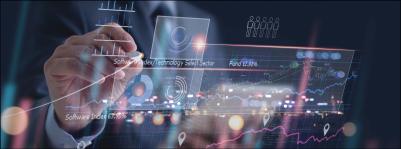
Free Certificate
How to be a Successful Business Analyst
You will learn about the responsibilities of a business analyst, the various skills needed, along with insights on how to prepare for a business analyst’s interview.
1 Hours

Free Certificate
Introduction to Design Thinking
Learn the fundamentals of design thinking and how it helps organizations to innovate, along with the application of design thinking through case studies.
2 Hours
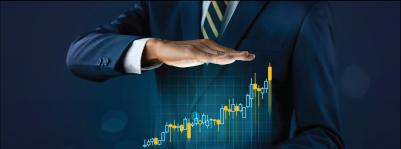
Free Certificate
Investing in the Modern Era
Learn about investing and various investment options available in the market along with how to build and manage a healthy portfolio
2 Hours

Free Certificate
Introduction to International Business Environment
Learn about globalisation and internationalisation along with its benefits and challenges faced by companies and professionals involved in international business.
3 Hours

Free Certificate
Introduction to Entrepreneurship
Learn the defining and behavioral characteristics of a successful entrepreneur and also understand the difference between a manager and an entrepreneur.
3 Hours
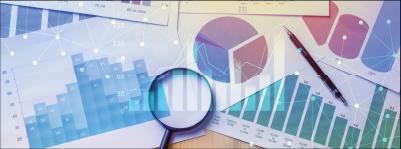
Free Certificate
Digital Innovations in the Financial System
Learn about the evolution of digital finance and its benefits along with the applications of AI and blockchain technologies in the financial services industry.
6 Hours
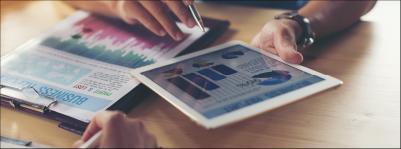
Free Certificate
Introduction to Ratio Analysis
"Learn ratio analysis for businesses, exploring diverse ratios. Calculate, interpret, and analyze real company performance, focusing on profitability ratios. "
5 Hours

Free Certificate
Introduction to Digital Banking
Learn about the importance of a bank in the financial system while understanding how to assess banking tasks and identify those that can be digitized.
6 Hours
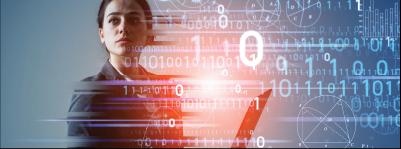
Free Certificate
Building Digital Transformation Strategies
Learn the fundamentals of digital transformation and how someone can build and implement digital transformation strategies.
1 Hours

Free Certificate
Introduction to Guesstimates
Learn to solve a given guesstimate along with some tips and tricks that will help you to efficiently find the answer while solving it during an interview.
2 Hours

Free Certificate
Introduction to Consumer Behaviour
Learn to decode consumer behavior and gather insights with the help of consumer behavior models and various case studies.
2 Hours

Free Certificate
Financial Analysis
Learn about the key operating levers needed to evaluate a company's performance and understand the importance of managing working capital.
7 Hours

Free Certificate
Introduction to HR Analytics
Learn HR analytics and understand how you can leverage the power of analytics to analyze HR data and manage the most valuable assets of your organization.
4 Hours
Management Videos
You Might Like To Watch


Understanding Your Market | Product Management Tutorial | upGrad
56:52
4,048 views


Building Artefacts from User Research | Product Management Tutorial | upGrad
59:57
893 views


How to create a good Product Requirements Document | Product Management Tutorial | upGrad
51:44
1,981 views


Minimum Viable Product | Basics & Detailed Perspective of MVP | Product Management Tutorial | upGrad
42:42
64,556 views


Top 10 Skills Of A Product Manager | Product Management | UpGrad
6:50
2,20,455 views


Product Management Certification Program | Product Management Course Demo | upGrad
3:30
5,769 views
Management Blogs
You Might Like To Read
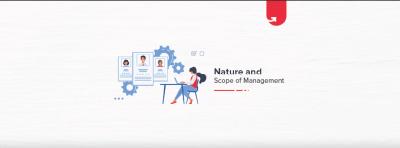
Management is a lucrative career and a dream come true for many. If you want to know all about the scope and nature of management, keep reading this article.

Nitin Gurmukhani
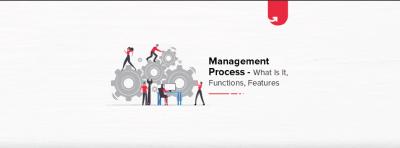
If you want to pursue a course in management, this article will be of great help. Let us find out all about the management process, its features, and functions.

Kamal Jacob
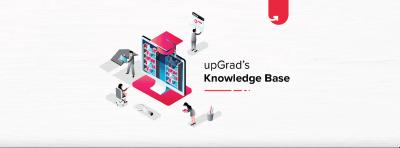
Project management case studies offer valuable insights and best practices for project managers. Explore them to learn the secrets of project success in various industries.

Keerthi Shivakumar
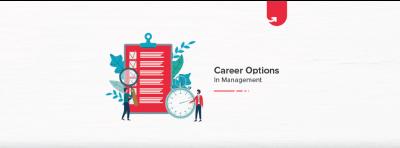
Whether you have work experience or not, you can pick from different career opportunities after studying management. Read this article to find out your options.

Kamal Jacob
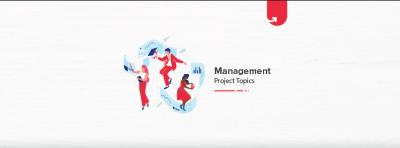
This article will help you explore various management project topics to start working on one right away. Our list of management project topics has enough options for you to choose from

Dilip Guru
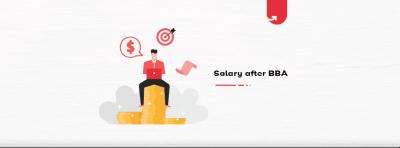
Wondering how much salary a BBA degree is worth in India? Here's taking a look at the various roles you can pursue with a BBA and the salary you stand to earn.

Kamal Jacob
Learner Support and Services
How Will upGrad Supports You
upGrad Elevate: Virtual hiring drive giving you the opportunity to interview with upGrad's 300+ hiring partners
Job Opportunities Portal: Gain exclusive access to upGrad's Job Opportunities portal which has 100+ openings from upGrad's hiring partners at any given time
Career Mentorship Sessions (1:1)
High Performance Coaching (1:1)
Interactive Live Sessions with leading industry experts covering curriculum + advanced topics
Personalised Industry Session in small groups (of 10-12) with industry experts to augment program curriculum with customized industry based learning
Live Discussion forum for peer to peer doubt resolution monitored by technical experts
Peer to peer networking opportunities with a alumni pool of 10000+
FAQs on Microeconomics Courses
1. Which instances of microeconomics are there?
Because a product's price has gone up, demand in a certain market has decreased. Another illustration is a company expanding its resources to provide additional items.
2. Which three principles of microeconomics dominate?
The three key ideas are supply and demand, consumer behaviour, and income levels. The greatest research has been done on these ideas for tracking microeconomic data.
3. Simply put, what is microeconomics?
The acts and conduct of families and enterprises are the main topics of microeconomics. Microeconomics demonstrates the fundamental movement of resources, money, products, and services.
4. What subject areas does microeconomics cover?
Microeconomics addresses issues related to how families and companies interact. The primary subjects are supply and demand, equilibrium, competition, profit maximisation, and opportunity cost.
5. Is Opportunity Cost Real?
The financial accounts of a corporation do not immediately reflect opportunity costs. However, from an economic perspective, opportunity costs remain quite significant. Opportunity cost is a somewhat abstract idea, though, so many businesses, executives, and investors neglect to consider it while making daily decisions.
6. What four distinct client purchase behaviours are there?
There are four different forms of consumer behaviour: complicated buying behaviour, dissonance reduction, variety seeking, and habitual buying behaviour. The sort of product a customer requires, their degree of engagement, and the variations across companies all influence the many forms of consumer behaviour.
7. What kind of customer behaviour would that be?
Take choosing a city getaway for two as an illustration of consumer behaviour. It could need substantial decision-making for someone just starting to date, but it might just require minimal decision-making for a couple dating for at least five years.
Making a reservation at a restaurant is another instance of customer behaviour. Scheduling a reservation for a night out with friends just takes a short amount of time; however, making one for an anniversary or a marriage proposal takes more thought.
8. What distinguishes perfect from the imperfect competition?
In a market with perfect competition, all providers engage in fair competition. Contrarily, competition is vulnerable to imbalances in imperfect markets where businesses do not compete on an even playing field.


upGrad Learner Support
Talk to our experts. We are available 7 days a week, 10 AM to 7 PM
Indian Nationals
Foreign Nationals
Disclaimer
The above statistics depend on various factors and individual results may vary. Past performance is no guarantee of future results.
The student assumes full responsibility for all expenses associated with visas, travel, & related costs. upGrad does not .






















-ae8d039bbd2a41318308f8d26b52ac8f.svg)

